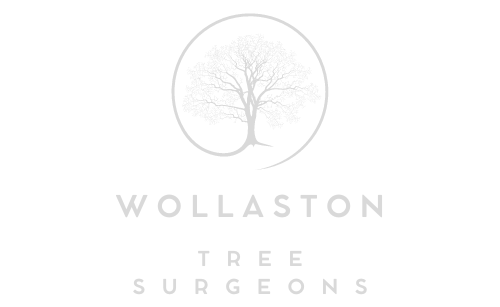Diagnosing Tree Damage: When Surgery Is the Answer
Introduction
Trees bring character, beauty, and biodiversity to our landscapes. But like any living organism, trees can suffer from disease, decay, structural failure, and environmental stress. Recognising when a tree is in trouble—and when professional surgery is the right solution—is vital for preserving the safety, health, and value of your property.
At Wollaston Tree Surgeons in Wollaston, Northamptonshire, we regularly assist property owners in diagnosing tree issues before they become hazardous. In this post, we’ll explore the signs of tree damage, when surgery is needed, and how timely intervention can prevent costly outcomes.
Recognising Signs of Tree Damage
Understanding the early warning signs of tree distress is key to acting before serious problems arise. Not all damage is visible, but regular visual checks are a great starting point.
Common Indicators of Tree Health Problems
- Cracks or splits in the trunk or major limbs
- Dead or dying branches, especially in the upper crown
- Leaning or imbalance in growth
- Fungal growth at the base or along the bark
- Unseasonal leaf drop or discolouration
- Cavities or hollows in limbs or the trunk
- Excessive sap, weeping wounds, or oozing
Each of these could signal anything from root issues to internal decay or storm-related damage. Left unchecked, they may pose risks to people, property, and the surrounding landscape.
When Tree Surgery Is the Best Option
Assessing Risk and Stability
Tree surgery becomes necessary when a tree’s structural integrity is compromised, but full removal isn’t the only answer. At Wollaston Tree Surgeons, we carefully evaluate the condition of damaged trees and recommend interventions that support both safety and longevity.
Surgical Solutions We May Recommend
- Crown reduction – to relieve stress from heavy or overextended limbs
- Crown thinning – to increase airflow and reduce wind resistance
- Deadwood removal – to eliminate brittle or broken limbs
- Pollarding – for certain species requiring size control
- Bracing and cabling – for structural support of weakened branches
- Selective pruning – to remove diseased or infested growth
- Root management – when underground growth threatens foundations or services
Each method is applied with precision, in line with BS3998 standards for tree work in the UK.
Importance of Professional Diagnosis
Expert Eyes and Equipment
Tree problems often go undetected until significant damage occurs. At Wollaston Tree Surgeons in Wollaston, Northamptonshire, we use both visual assessment and specialised tools such as resistograph testing and decay detection equipment to evaluate internal health without invasive damage.
Site-Specific Factors We Consider
- Proximity to buildings, roads, or footpaths
- Soil conditions and drainage
- Tree species and age
- History of damage, weather impact, or poor pruning
- Potential for recovery versus removal
The Cost of Delayed Action
Waiting too long to address tree damage can lead to significant consequences:
- Falling limbs during high winds
- Entire tree collapse
- Spread of pests or disease to other trees
- Structural damage to roofs, walls, driveways, and underground systems
- Injury to people or pets
Prevention Is Always Cheaper
Regular inspections, even when no issues are obvious, can help avoid these costly scenarios. A small corrective surgery today can prevent major loss or liability tomorrow.
Tree Surgery and Conservation
Balancing Safety with Preservation
We understand the ecological and emotional value of trees. Our approach at Wollaston Tree Surgeons is never to remove unless it’s the only option. Instead, we aim to preserve trees through targeted surgery, helping them adapt and thrive within their urban or rural setting.
Local Considerations
Some trees in Wollaston may be subject to Tree Preservation Orders (TPOs) or lie within conservation areas. We manage all permissions and planning applications on your behalf, ensuring compliance with local regulations.
Conclusion
Diagnosing tree damage early and knowing when surgery is the right step can make the difference between saving a valued tree and facing costly removal or repairs. Whether it’s a storm-damaged branch or signs of internal decay, prompt attention ensures safety and supports healthy tree growth.
Wollaston Tree Surgeons is committed to helping property owners in Wollaston, Northamptonshire maintain safe, thriving trees. If you suspect an issue or simply want expert advice, contact our professional team today for an assessment. Early action is always the safest route when it comes to tree care.
Call us on: 01933 823 181
Click here to find out more about Wollaston Tree Surgeons
Click here to complete our contact form and see how we can help with your tree needs.

